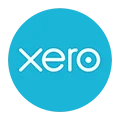As an example, if your campaign consists of a sequence of any number of emails that gradually build up to your primary objective, marketing automation lets you create all of these in advance. These can not only include your calls to action for every email in the sequence, but also allow you to configure the system to send each email to your target leads at preset intervals of time. Once set up, you can leave it to the system to do the rest, automatically. Thereafter, you can set up triggers such that each time a desired action has taken place, the system automatically scores the lead. You can also set automatic alerts for notifying your sales team every time a lead is qualified, so that timely engagement is enabled. While this is a basic example of automation, in reality, you can render your campaign as simple or as complicated as required, and there are no limits to what marketing automation can do to facilitate this.














































